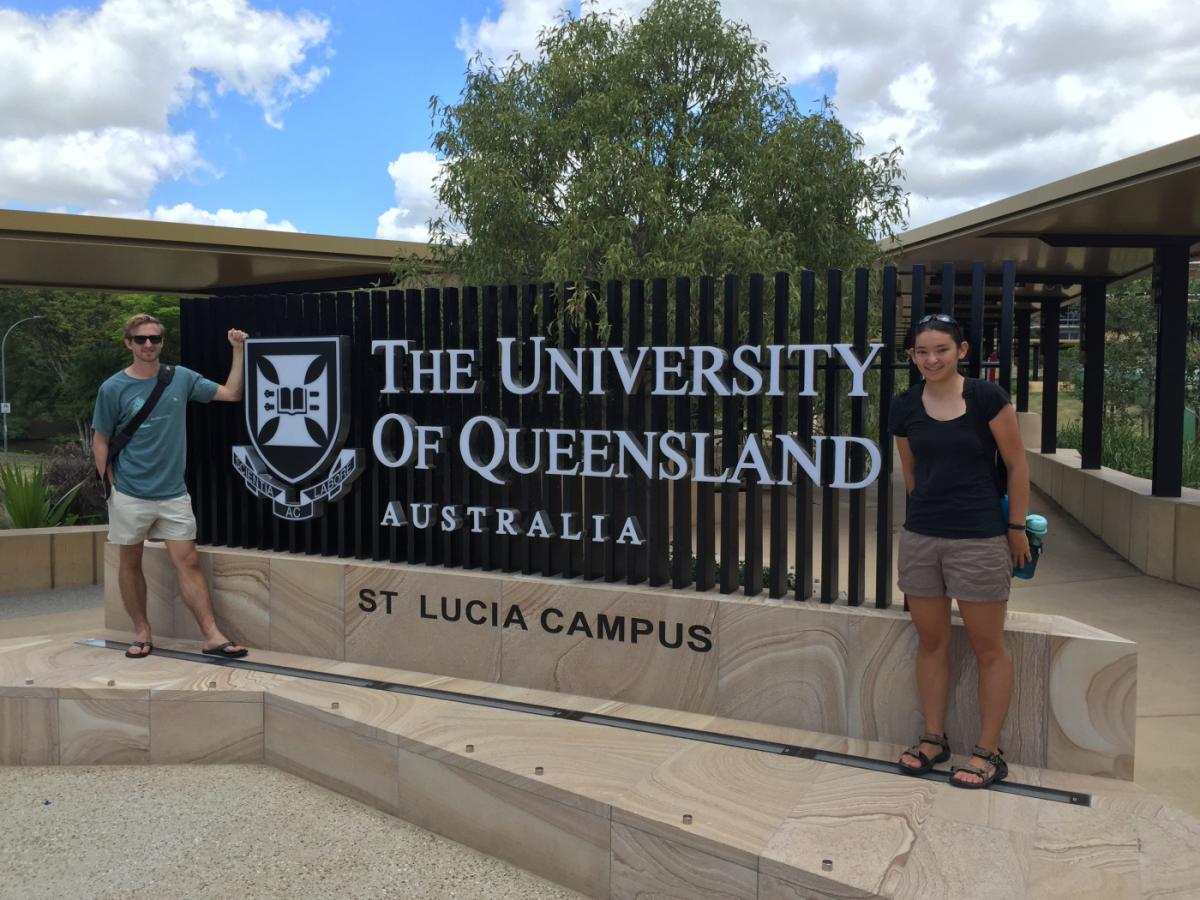Student Spotlight: Kalia Bistolas

What is your area of research?
I am a second-year graduate student in the Department of Microbiology at Cornell. I am interested in the ecology of viruses that infect aquatic microcrustaceans (mostly amphipods, copepods, and isopods). Our lab combines genomic techniques with experimental infection trials to better understand the role of single stranded DNA (ssDNA) viruses in governing host fitness, biogeochemistry, and ecology.
What inspired you to choose this field of study?
Earth is approximately 4.5 billion years old. Over the course of its history, microorganisms have mediated the speciation of the planet’s major elements, formed the foundations of chemical cycles, permitted the proliferation of life, and allowed this life to persist through extreme environmental pressures. In our own bodies, bacterial cells typically outnumber our own 10-to-1, with beneficial microbes facilitating digestion, immune response, and production of supplemental metabolites. Microorganisms not only govern the human condition, but underpin the trophic architecture of ecosystems worldwide. Viruses are both essential and ubiquitous; yet for every little bit that we do know about them, there are a thousand things that remain unknown. I chose to study viruses to learn how some of the smallest biological entities contribute to global patterns of diversity.
Why is this research important?
Amphipods and copepods populate nearly every aquatic environment, often dominating systems in abundance and diversity. These organisms are essential foundations of aquatic food webs. Despite the abundance and importance of these invertebrates, little is known about their viral consortia (nanobiome). I have two main research foci: (1) describing and comparing patterns of viral consortia associated with microcrustaceans, and (2) assessing the impacts of circovirus-like elements on host mortality and biogeochemistry. These two foci may lend insight into patterns of host diversity and co-evolutionary history between host and virus, and determine if ssDNA viruses are responsible for mesograzer mass-mortality events.
How has your background influenced your scholarship?
Past experiences with microbiological fieldwork definitely influenced the topic and scope of this grant proposal. Through Dr. Hewson’s lab, I have had the opportunity to collect samples from the Sargasso Sea, Catalina Island (CA), the Olympic Peninsula (WA), and the Great Lakes. These fieldwork expeditions allowed me to do some initial comparative analyses of ambient viruses associated with temperate microcrustaceans, and facilitated the formation of sound hypotheses (proposed in the grant). I also had the exciting chance to conduct fieldwork at La Selva Biological Station in Costa Rica as an undergrad, which first introduced me to the challenges and joys of studying microbiology in biodiversity hotspots, and inspired me to join a lab with fieldwork opportunities for my graduate studies.
What else has influenced your thinking as a researcher or scholar?
I have always had a constant curiosity about diversity and complexity of the natural world, which generated my thirst for knowledge and pursuit towards understanding it. My advisor, Dr. Ian Hewson, and committee have been essential in cultivating my understanding of viral ecology and refining my hypotheses.
 You recently traveled to Australia on a travel grant from the Graduate School. How was your experience there?
You recently traveled to Australia on a travel grant from the Graduate School. How was your experience there?
Collecting samples in Eastern Australia was an incredible experience. Australia is truly a biodiversity hotspot, and one of the best places on the planet to collect an assortment of microcrustaceans due to its massive diversity. It was an excellent chance to meet collaborators, learn methods to study viruses in tropical environments, and better understand the ecology of the host organisms. I would love to return.
In what ways was the research you conducted on this trip vital to your scholarship?
Metaviromic analysis (investigation of ambient viral consortia) of tropical invertebrates was a major missing component in our study of the nanobiomes of aquatic invertebrates. The samples collected in Australia will provide a much-needed comparison to temperate host species. Perhaps these samples will provide insight about the importance of variation in host metabolic rate, ecosystem primary productivity, and invertebrate community structure on patterns of viral association and infection. This expedition was a major step in understanding viral communities in tropical microcrustaceans and advancing my graduate studies.
What opportunities did the travel grant provide for you that you perhaps wouldn’t have had access to otherwise?
Assistance from the Graduate School’s research travel grant provided access to otherwise unobtainable samples. By physically traveling to Australia, I was able to get a sense of the distribution and astonishing diversity of tropical mesograzers and collect invertebrates with the express intent to perform metaviromics. Support from the research travel grant also frees up other resources to offset sequencing costs. At the end of the day, that means more data!
Any advice for other graduate students interested in applying for research travel grants?
It is important to ask questions that are both tractable and unique. The travel grant provides the resources to go places and collect data that would otherwise be outside of your grasp. It is important to know that you can fulfill the objectives of your proposal and use the Graduate School resources to expand your knowledge as a student and contribute to the scientific community at large.
Why did you choose Cornell to pursue your degree?
Finding the right graduate school was more about finding the right lab than the right program or institution. Pursuing a doctoral degree at Cornell provides the opportunity to explore the ecology, physiology, and biogeography of viral assemblages in association with metazoan hosts and their impact on macroecological systems. Cornell has a range of great resources for microbiology students—it is a huge advantage to have access to journals, sequencing centers, and stable isotope labs.
What’s next for you?
Sampling invertebrates in Australia was really the first step in this project. We are now back in the lab, processing the samples for metaviromic analysis.
Interview by Sally Kral, communications and outreach assistant in the Graduate School
